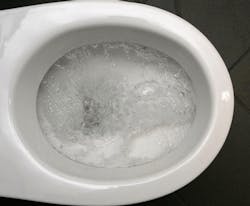Toilet-to-tap water probably better quality than most water
As droughts and water shortages increase in the sunbelt and in Texas in particular, toilet-to-tap management of the drinking water supply will become more common. Challenging the "ick" factor, water from such a supply may actually be better quality than water mixed with surface water or underground aquifers, says engineering instructor Desmond F. Lawler in an op-ed in the Fort Worth Star Telegram. Lawler, who teaches at the Cockrell School of Engineering at the University of Texas at Austin, gives a clear and concise explanation of toilet-to-tap for a non-technical audience.
Often coverage of technical topics in a daily newspaper may be partially incorrect, but Lawler is spot-on in his explanation of toilet-to-tap. Water from a treatment plant is often discharged into surface water to be mixed with "natural" water. Because of drought, flows in surface waters have been so reduced in areas of the southwest that residents are often drinking substantial amounts of toilet-to-tap water, Lawler wrote
Of the 11 drinking water plant intakes in the U.S. with the highest percentage of such de facto reuse, eight are in Texas. So, many Texans are now, probably unknown to them, ingesting water that was recently municipal waste water.
Simply put, if you want to drink very clean water, direct potable reuse will likely provide higher quality water than many drinking water plants currently produce now.
